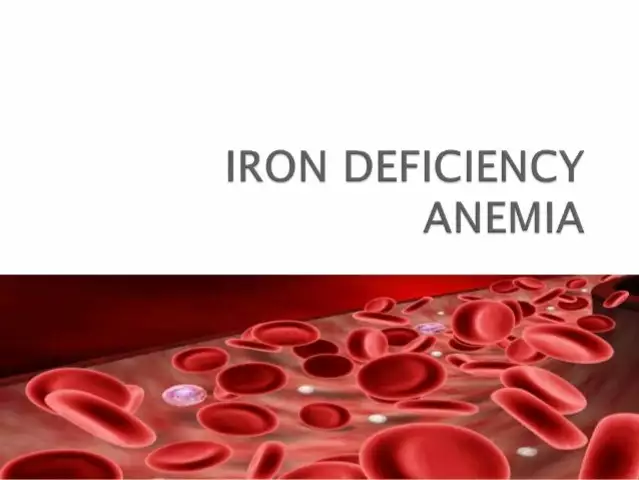Unlocking the Secrets of Imatinib: A Revolutionary Cancer Drug
As a groundbreaking medication in the fight against cancer, Imatinib has become a popular topic of discussion in the medical community. In this article, we will delve into the fascinating world of Imatinib, exploring the key components that make it such an effective cancer treatment. With a focus on understanding the mechanism of action of this revolutionary drug, we will take a closer look at the following aspects:
Imatinib: A Breakthrough in Targeted Cancer Therapy
Imatinib, also known as Gleevec, is a medication that has been hailed as a breakthrough in the world of targeted cancer therapy. This powerful drug was first approved by the FDA in 2001 for the treatment of chronic myeloid leukemia (CML), a type of blood cancer. Since then, its usage has expanded to treat other types of cancers as well, including gastrointestinal stromal tumors (GISTs) and certain other blood cancers. The success of Imatinib lies in its unique ability to specifically target and inhibit the cancer cells, while leaving healthy cells largely unharmed. This targeted approach has significantly improved the prognosis for many patients and has led to a paradigm shift in cancer treatment.
How Imatinib Targets Cancer Cells: A Closer Look at Tyrosine Kinase Inhibitors
Imatinib belongs to a class of medications known as tyrosine kinase inhibitors (TKIs). Tyrosine kinases are enzymes that play a critical role in regulating various cellular processes, such as cell growth and division. In many cancer cells, tyrosine kinases are overactive, leading to uncontrolled cell growth and the formation of tumors. Imatinib works by blocking the activity of these specific enzymes, thus inhibiting the growth and proliferation of cancer cells. By targeting the cancer cells at their source, Imatinib offers a more precise and effective method of treating cancer compared to traditional chemotherapy drugs, which can have severe side effects due to their non-specific nature.
Understanding the BCR-ABL Fusion Protein: The Key Target of Imatinib
In the case of chronic myeloid leukemia (CML), the primary target of Imatinib is a fusion protein known as BCR-ABL. This abnormal protein is formed as a result of a genetic mutation known as the Philadelphia chromosome, which involves the swapping of genetic material between chromosomes 9 and 22. The BCR-ABL fusion protein is a type of tyrosine kinase that is constantly active, leading to uncontrolled growth and division of cancerous cells in the bone marrow. Imatinib specifically targets and inhibits the BCR-ABL protein, thereby halting the progression of CML and allowing the patient's bone marrow to function normally once again.
Managing Side Effects: Balancing Efficacy and Tolerability
While Imatinib has proven to be an effective treatment option for many cancer patients, it is not without its side effects. Some of the most common side effects include nausea, vomiting, diarrhea, muscle cramps, and fatigue. However, these side effects are generally considered to be mild and manageable compared to those associated with traditional chemotherapy drugs. In most cases, side effects can be managed with appropriate supportive care and adjustments to the dosing regimen. As with any medication, it is important for patients to discuss any concerns with their healthcare provider to ensure the best possible treatment outcomes.
Resistance to Imatinib: Challenges and New Developments
Although Imatinib has been a game-changer in the treatment of certain types of cancer, some patients develop resistance to the drug over time. This can occur due to various factors, such as the presence of additional mutations in the cancer cells or the overexpression of certain proteins that protect the cells from the effects of Imatinib. Researchers are continually working to develop new strategies to overcome resistance, including the development of second- and third-generation TKIs that can target cancer cells in different ways, as well as combination therapies that can increase the effectiveness of treatment.
Imatinib: A Ray of Hope for Cancer Patients
In conclusion, Imatinib has revolutionized the field of cancer treatment by offering a targeted therapy option that is both effective and well-tolerated by patients. By understanding the mechanism of action of this powerful drug, researchers and clinicians can continue to refine and expand its use in the treatment of various types of cancer. As a testament to the impact of Imatinib, many patients with previously poor prognoses now have a much brighter outlook, thanks to this groundbreaking medication.








20 comments
Niki Tiki
Imatinib is just another example of how American science leads the world. We invented this stuff while other countries were still arguing over who invented the wheel. No wonder our cancer survival rates are through the roof.
Jim Allen
So basically it's a magic bullet? 🤔 I mean if it's so great why aren't we giving it to everyone with a headache? Just saying.
shivam mishra
BCR-ABL fusion is the real MVP here. The Philadelphia chromosome mutation is such a clean target - it's like finding a single broken wire in a whole city's power grid and cutting it without touching anything else. That's precision medicine right there.
Mansi Gupta
The scientific rigor behind this drug is admirable. It demonstrates how molecular biology can translate into tangible human benefit. I appreciate the clarity with which the mechanism is explained.
Erin Corcoran
TKIs are the future, no cap. Imatinib didn't just treat CML - it redefined what 'treatment' even means. We're talking targeted therapy vs. chemo's shotgun approach. Big difference. 🎯
Scott Dill
Wait so if it targets specific proteins, why do people still get side effects? Isn't that the whole point? Did they just not test it enough?
Arrieta Larsen
My cousin was on it for 8 years. Had some fatigue but no hair loss. She's been in remission since 2016. This drug gave her back her life.
Mike Gordon
I dont know why people make such a big deal about this drug its just a pill that stops a protein from doing its job which is what every drug does really
Kathy Pilkinton
Oh so now we're celebrating a drug that costs $100k a year? How many people actually get to use this? The real revolution is the pharmaceutical industry's ability to monetize hope.
Holly Dorger
i just read this and i was like wow this is so cool but i think i misspelled something like 'imatinib' or whatever its called but still it's amazing how science can fix broken cells
Amanda Nicolson
I cried when I read this. Not because I have cancer - but because I have a friend who did, and she went from being bedridden to hiking the Rockies in two years. This drug didn't just stop a protein - it restored sunrises. It gave people back their birthdays. It turned terminal into 'see you next summer.' That's not medicine. That's magic with a prescription pad.
Jackson Olsen
So this drug only works on certain cancers? Thats kinda wild. Like imagine if we could make pills for every disease like this. Would be nice
Penny Clark
i didnt know this was a targeted therapy i always thought it was just another chemo pill but now i get it like it’s not killing everything just the bad guys 😍
Carolyn Kiger
This is why I got into biotech. Seeing something go from lab to life-saving treatment - that’s the dream. We need more of this.
krishna raut
BCR-ABL inhibition = 90% remission in chronic phase CML. Simple.
Prakash pawar
They call it a breakthrough but really its just capitalism in a pill. The real revolution is how we glorify corporate patents as miracles. Who decides what's a miracle anyway? The FDA? Or the shareholders?
MOLLY SURNO
The clinical data supporting Imatinib's efficacy is robust and well-documented. It represents a significant advancement in oncology.
Alex Hundert
I work in a clinic. Patients on Imatinib are the ones who come back smiling. Not because they're cured - but because they're living. That's worth more than any headline.
Emily Kidd
my bro took this for gist and it shrunk his tumor by 70% in 3 months. no chemo no hospital stays just pills and hope. this drug is a godsend
Niki Tiki
You think other countries can even understand this level of science? We made this. They just copy it and then complain about the price.